Taking a look at Thin Mini-ITX AM4 motherboards
16 May 2021
Comments
Thin Mini-ITX standard was created by Intel for small form factor and integrated PCs. AMD based system were absent from this form factor but Asrock and some OEMs did ventured into it with A320 chipset supporting early Zen APUs. Let’s take a look at such OEM Thin Mini-ITX board — Quadro A4-320.
In simple terms Thin Mini-ITX is a Mini-ITX board that is powered by an external 19V power brick
(no ATX power supply) and has height limit at around 25-30 mm. If you would take a look at Intel design guide you would find a lot of requirements/good practices for this standard
in terms of connectivity, I/O placement and more. Intel sees Thin Mini-ITX boards as the building blocks of:
- All In One (AIO) PCs
- Stackable home theater PC to be size compatible with the standard width of AV components such as DVD players and receivers
- VESA mountable Thin PC
- Digital signage PC (Built inside or behind a TV or other display)
Some All In One PCs do actually use thin mini ITX board and you sometimes can find an Onda, Medion Akoya or just no-name board on second hand parts market. There are also Thin Mini-ITX boards for consumers but lately they have been superseded (to some extent) by nettops (like Intel NUC form factor).
Mini-ITX versus Thin Mini-ITX
ASrock seems like the only popular motherboard vendor that released an AM4 Thin Mini-ITX board for consumer and OEM markets. It supports Picasso, Raven Ridge and Bristol Ridge APUs — up to 65W TDP. If you would take a look at the board you can see a second HDMI port on the side which was likely intended for some AIO usage. 30-pin LVDS connector is another Thin Mini-ITX recommended connector and can drive displays up to 1080p 60Hz:
Asrock A320TM-ITX Thin Mini-ITX board
LVDS display connector
As AMD did not released Zen 2 APUs for consumers on the DIY market there was likely no reason to release a board with a newer chipset that would support them. As of the time of writing this article there are not AM4 Thin Mini-ITX boards with a chipset other than A320 so no support for Zen 2 or newer.
Aliexpress as well as other Chinese sites offer a no-name Quadro A4-320 board that is similar to the Asrock one. I’ve also seen this board under the brand of Onda — and likely it is used in some AIO. The board does not come with an I/O shield so it even more likely it was made only for AIO and not consumer DIY PCs.
Quadro A4-320
Quadro A4-320 rear I/O
The board has 2 SATA ports with custom SATA power connectors (only one matching cable in the box) due to no ATX power supply in the system. One NVMe drive and a WiFi/BT card can be installed as well. The system is powered by a 19V power adapter via the barrel plug on the back or via internal 12V ATX connector for integrated systems.
SATA and SATA power connectors
The board worked as expected, but during testing the M.2 connector soldering broke off from one side preventing M.2 from working (re-soldering required). The BIOS is also quite basic without much options.
In terms of power draw I used a lab DC power supply set to 19V.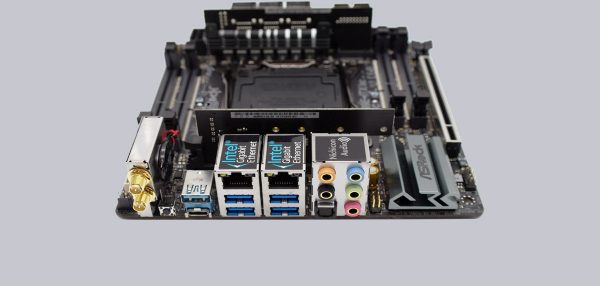 When off the 2200G system (2 SO-DIMMs, USB keyboard and mouse, NVMe drive, Akasa cooler) draw 0,57W. Idle power draw was 22,8W, during Tesseract shooter benchmark it risen to 64,6W and during Kernel compilation up to 74,1W.
When off the 2200G system (2 SO-DIMMs, USB keyboard and mouse, NVMe drive, Akasa cooler) draw 0,57W. Idle power draw was 22,8W, during Tesseract shooter benchmark it risen to 64,6W and during Kernel compilation up to 74,1W.
Thin Mini-ITX is an Intel standard and thus thin coolers or even cases were designed around Intel 115X systems. Due to this both AM4 Thin Mini-ITX boards are not compatible with AM4 coolers but instead use the Intel 115X coolers — and if you use a Thin Mini-ITX case you can only use coolers that have around 20-25mm of height so there is a reason for this change. Such low profile coolers are mostly made by Akasa but you will find few other brands as well.
Akasa AK-CC7129BP01 21mm cooler
Akasa AK-CC7129BP01 cooler is rated for 73W TDP CPUs and the sheet states 30.75 dBA as the max noise level it can produce. The height is only 21mm which allows it to fit in cases designed for this form factor:
Thin Mini ITX case
Akasa and few other companies also make fanless cases where the case becomes the radiator:
Akasa Euler fanless case
As you can see the whole ecosystem revolves around small form factor systems that could be used as media PCs and alike.
AM4 vs 115X coolers in practice
A lot of 115X coolers can have a small round cold plate which limits the contact surface area:
Akasa cooler contact area
This could limit the cooling capabilities but there are alternatives with bigger rectangular cold plates as well — so if you want optimal cooling you can go through few shops until you find one.
What’s questionable is mounting pressure. When I used the Intel stock cooler the pressure was kind of meh as the Arctic Silver Ceramique 2 thermal paste was barely squished
. When I mounted a basic tower cooler that used a backplate the pressure looked much better:
Intel stock cooler
Silentium PC Spartan 4 MAX tower cooler
Tower cooler made much better contact with the IHS
When building a Thin Mini-ITX system, especially with the AM4 socket it’s likely better to go for a cooler that uses a backplate. That way you can add washers to increase the mounting pressure if needed.
If we look at the thermals for Ryzen 3 2200G (4C/4T 3,7GHz single core boost, 3,65GHz all core boost) the Akasa AK-CC7129BP01 could only manage 3496 MHz in all-core stress test while hitting the thermal limit.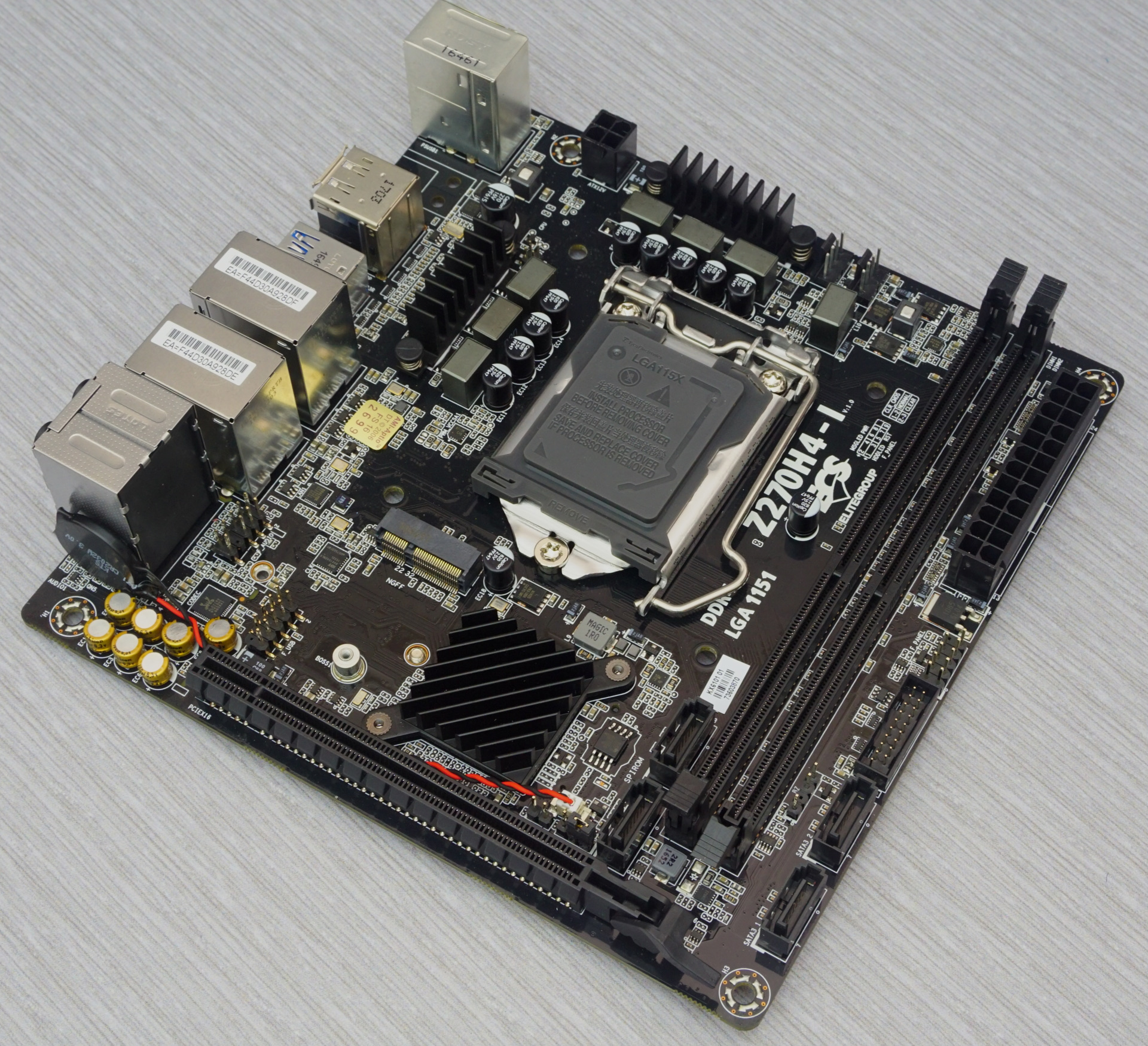 The Spartan 4 tower cooler allowed for 3672 MHz all core clock speeds while not hitting the thermal limit of the Ryzen 2200G:
The Spartan 4 tower cooler allowed for 3672 MHz all core clock speeds while not hitting the thermal limit of the Ryzen 2200G:
Ryzen 2200G plus Akasa AK-CC7129BP01 CPU stress test
Ryzen 2200G plus Spartan 4 CPU stress test
You can’t use a tower cooler in a Thin Mini-ITX system but it shows that super small cooler with a small fan won’t be the top performer for high APU loads. Much larger mass fanless cases that function as radiators could be better but that depends on the ambient temperature and ambient airflow around the device.
Due to space and height restrictions Thin Mini-ITX boards use horizontally oriented SO-DIMM memory slots. This isn’t much of a problem for Intel CPUs but AM APUs can benefit from high end DDR4 memory. A Zen 2 APU like 4650G can handle 4600 MT/s CL16 (or better) with memory to Infinity Fabric clocks at 1:1 ratio (where as desktop Zen 2 and Zen 3 max out for 1:1 ratio at around 3800 MT/s RAM). This boosts iGPU and the CPU performance noticeably. Having to use JEDEC mobile SO-DIMM RAM kits means we are limited to at best 3200CL22 kits (and some
Having to use JEDEC mobile SO-DIMM RAM kits means we are limited to at best 3200CL22 kits (and some better
ones may be 1.35V instead of 1.2V kits which likely won’t be compatible).
If you want the best APU gaming system then Thin Mini-ITX likely will not provide it. You will pay extra for the case and board (assuming there will be such board) and then you will have to use lesser RAM. In a standard mini-ITX system you will likely pay bit less for the board and case (unless it’s a G.A.M.I.N.G RGB board), while paying more for a better RAM you will be able to get more performance from and better cooling at a somewhat bigger form factor (height).
To compare Ryzen 3 2200G performance on A320 Thin Mini-ITX board and B350 standard board I ran few Phoronix benchmarks on Ubunut Linux — 2105153-HA-2105156HA77. I used 2x4GB 3200CL22 SO-DIMM ram and 2x8GB 3200CL22 JEDEC desktop RAM (while you could try a much better kit with an XMP profile). The 2200G is bit old and overall did not use the highest presets for both JEDEC RAM kits.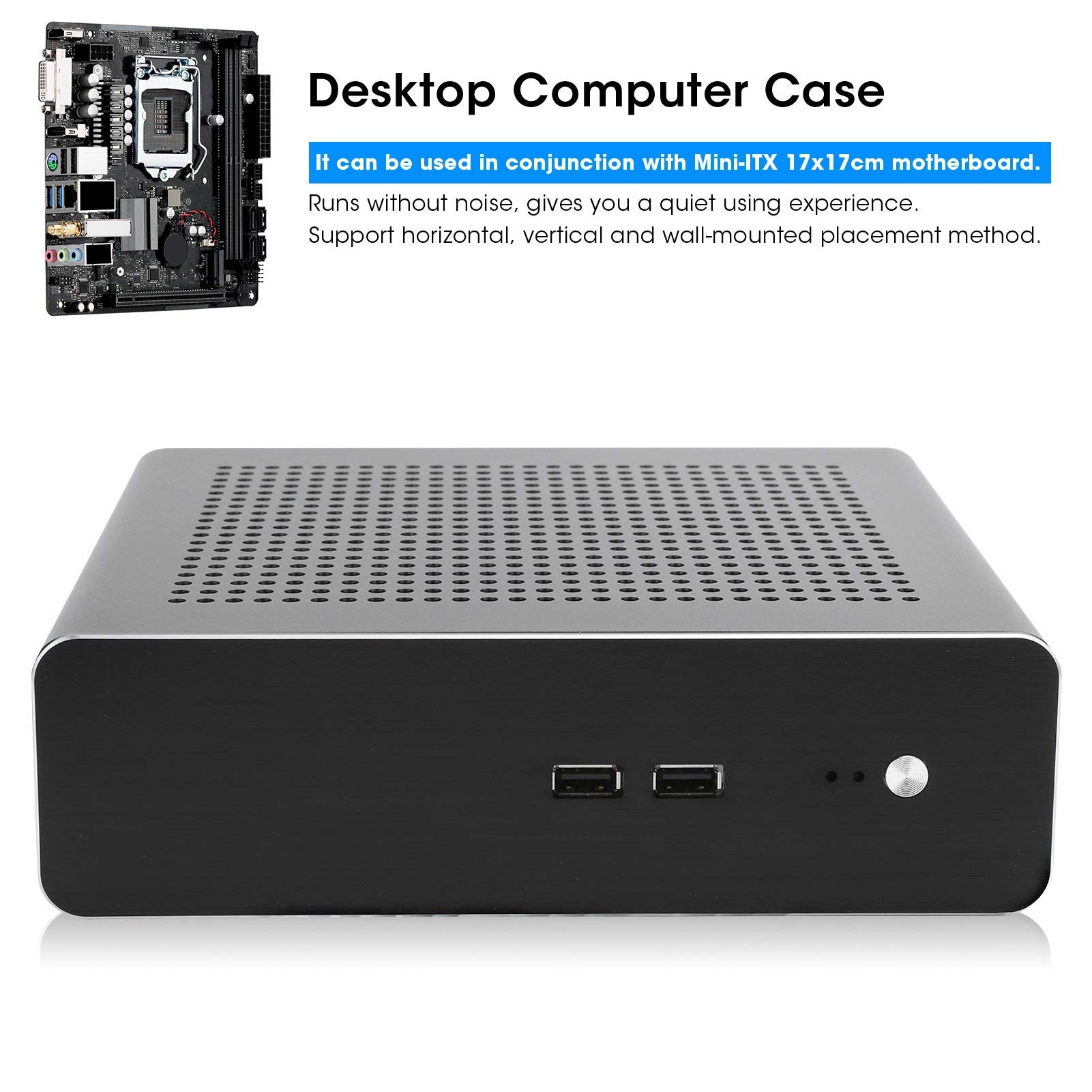 The SO-DIMM was running at 2400 CL17 while the desktop kit clocked at 2800CL19 (JEDEC RAM kits have few profiles and the system
The SO-DIMM was running at 2400 CL17 while the desktop kit clocked at 2800CL19 (JEDEC RAM kits have few profiles and the system chooses
the highest it can handle — it’s no like XMP where you can choose a profile).
The results show around 15% performance uplift for game/game-alike benchmarks (Tesseract shooter, Unigine Superposition and Valley) on the desktop board. CPU compute benchmarks (Kernel compilation, Blender rendering, BZIP2 compression) showed around 7% uplift. On Windows both boards showed same behavior (clocks, power) under the CPU-Z stress test.
Tesseract shooter benchmark
Blender CPU rendering benchmark
And in my previous article about comparing desktop and mobile RAM I’ve tested this board and a 2400CL17 desktop RAM kit to see if there would be a difference for ~same timings:
Aida64 showed bit lower latency and better transfer speeds for the desktop DIMM configuration.
Here it’s clear that the A320 with SO-DIMM memory performs worse in World of Warcraft than a B450 board with desktop memory.
Thin Mini-ITX is a handy standard for fanless and very small systems. If AMD launches Zen 2 and/or Zen 3 widely for DIY market then maybe we will see a new Thin Mini-ITX board for them. Combined with a fanless radiator-case it would be an excellent media/always-on system. For pure gaming on the integrated graphics likely standard Mini-ITX will be better — for cooling and desktop RAM.
Nettops with like 4700/4800U (Asus PN40) or 4800H (Aliexpress) are available but those usually use laptop-style cooling which can be more noisy than even Thin Mini-ITX solutions. The availability and ease of use is better but depending on design the thermals and noise can be worse.
For makers and when prototyping some devices Thin Mini-ITX can offer some extra flexibility of like LVDS connector for displays and simpler power delivery than a standard ATX based motherboard. There are x86 small single board computers (aside of ARM ones) but those tend to be much more expensive and rather limited in terms of I/O and features.
Thin Mini-ITX board with integrated Pentium 4405U
Thin Mini-ITX h410 board for 8/9-th gen Intel desktop CPUs
RkBlog
ASRock’s cheap chipset-less Thin Mini-ITX motherboard with AM4
There are only a few modern motherboards of the Thin Mini-ITX format. The latest among them is the ASRock X300TM-ITX. It is in its essence very simple and does not even have its own chipset. The equipment of the board is thus more modest, but it will be one of the cheapest options for AMD APU. Support is across all classes, from Athlon Raven Ridge to the highest performance Renoir (Ryzen 7 Pro 4750G).
The new ASRock X300TM-ITX motherboard has been released. It is designed for smaller computers that require half the height of the I/O shield. In this case, it is only 2.5 cm (1″) high, as on other Thin Mini-ITX boards. The area dimensions of the PCB are otherwise common with traditional Mini-ITX format motherboards, i.e. 170 × 170 mm.
The ASRock X300TM-ITX is a bit strange in that its design does not include a southbridge, but this board does not even work with it. Only the integrated northbridge (SoC) in Athlon and Ryzen processors is used for operation.
Only the integrated northbridge (SoC) in Athlon and Ryzen processors is used for operation.
All models with Raven Ridge, Picasso and Renoir core models are supported, including the 65-watt ones. The 5-phase power phase design of the board is quite decent and also uses a 4-pin additional power supply. However, the use of processors without iGPU is not considered. First, they all have a higher TDP than supported, and most importantly, the board does not have a PCI Express ×16 expansion slot, so you will not connect a graphics card to it.
It also differs from most standard Mini-ITX boards by using smaller SO-DIMM memory slots. There are two and officially support dual channel 64 GB DDR4-2933 (Raven Ridge and Picasso) and DDR4-3200 (Renoir), respectively.
The RJ-45 network connector (Realtek RTL8111GR) as well as the external USB ports are run from separate controllers. All four USB connectors on the rear panel are of the 3.2 gen 1 standard (i.e. with 5 Gb bandwidth), while one of them can be optionally type C.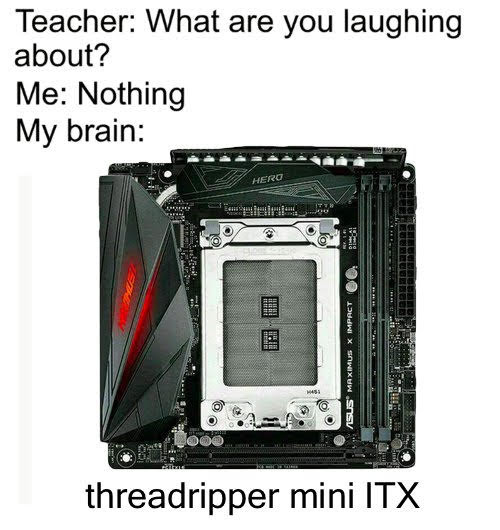 You can run four extra USB connectors (this time only of the 2.0 standard) onto the PC case from the internal headers.
You can run four extra USB connectors (this time only of the 2.0 standard) onto the PC case from the internal headers.
There are also two M.2 slots among the internal connectors. One for the WiFi/BT module (not included) and the other for SSD with full PCIe 3.0 ×4 support. You can also connect one traditional 2.5″ SATA storage to the board.
It is also worth mentioning that the board has up to three video connectors. One of them is internal LVDS, which is mainly used to connect LCD displays in laptops. This may be a more suitable option for pre-built computer systems than an external connection, but will only display 1920 × 1080 px at 60 Hz. Only the two external HDMI 2.1 connectors will allow higher resolution. A serial COM port is also included.
When and for what price the X300TM-ITX will be sold was not revealed by ASRock in the press release. But since this is not an announcement but a release and it’s already listed on the ASRock website, the availability in stores can be expected any day.
Back to: ASRock X300TM-ITX
- ASRock X300TM-ITX
Flattr this!
ASRock motherboards
Razer Blade 14 2023 unveiled. Powerful AMD Ryzen 9 7940HS 8-core processor, GeForce RTX 4070 Laptop and 240Hz QHD screen in fairly thin 14-inch laptop
European retailers, according to TechRadar, have begun accepting orders for the world’s most powerful x86 processor — the AMD EPYC chip …, but you won’t get it AMD surprised fans by introducing the new Ryzen 5 5600X3D processor for the older AM4 platform. The best part? AMD plans to offer e …
Low flickering screen, 120-watt charging and starting at $425. iQOO Neo 7 Pro Smartphone Presented iQOO brand today introduced not only the flagship 11s with 200-watt charging, but also the more affordable Neo 7 Pro model, which, however, also stands out …
found in some GeForce RTX 4070 Recently it was reported that PCI-SIG is developing a melt-proof 12V2x6 power connector to replace the original 12VHPWR, which is used in . .. The ASUS GeForce RTX 4090 ROG Matrix has become the first graphics card in history to hit the 4GHz GPU overclock mark. The record was held by …
.. The ASUS GeForce RTX 4090 ROG Matrix has become the first graphics card in history to hit the 4GHz GPU overclock mark. The record was held by …
The cheapest Ryzen 7000 performs at the level of the Ryzen 5 7600X in the first test. At the same time, Ryzen 5 7500F will be deprived of iGPU The Ryzen 5 7500F processor that was recently listed on PugetBench is now listed on Geekbench. The software allows us to confirm the presence of six cores …
The new AMD Ryzen 5 5600X3D processor was compared with the Intel Core i5-13600K in 10 games — which is better in 2023? Tested on PC with GeForce RTX 4090 graphics card and 32GB DDR4-3600 RAM. 1080p results: CYBERPUNK 2077 — 111 fps (Ryzen 5 560 …
Gainward GeForce RTX 4070 Phoenix GS graphics card (12 GB): quiet and very efficient CO, nice backlighting Gainward GeForce RTX 4070 Phoenix GS (12 GB) is a very attractive graphics card from the “pre-top” category (formally it is only 4th in performance . ..
..
1.7 kg 16-inch laptop with 8-core Ryzen 7
AMD Ryzen Z1 Extreme processor is more powerful desktop Intel 9
Xiaomi will present the RedmiBook Pro 15 Ryzen Edition 2023 with Ryzen 7 7840HS chip and 120Hz 3.2K display at a cost of $700 Xiaomi will soon introduce at least two new laptops. They will be called RedmiBook 14 and RedmiBook Pro 15 Ryzen Edition 2023. The company ofi …
8GB RAM, 90Hz screen and stereo speakers for $84. AGM Z1 smartphone introduced [Updated] [Updated 14:05 07/18/2024] AGM has launched the Z1 smartphone in the Chinese market, one of the cheapest in its class.
Expert tested Radeon RX 7900 XTX in conjunction with Ryzen 7 7800X3D and GeForce RTX 4080 with Intel Core i7-13700K in 8 games board for AMD Ryzen 7 7800X3D: Gigabyte X670E AORUS MASTERMat …
OLED 3K 90Hz screen, AMD Ryzen 7 7840S 8-core, 32 GB RAM in a chassis that weighs only 1.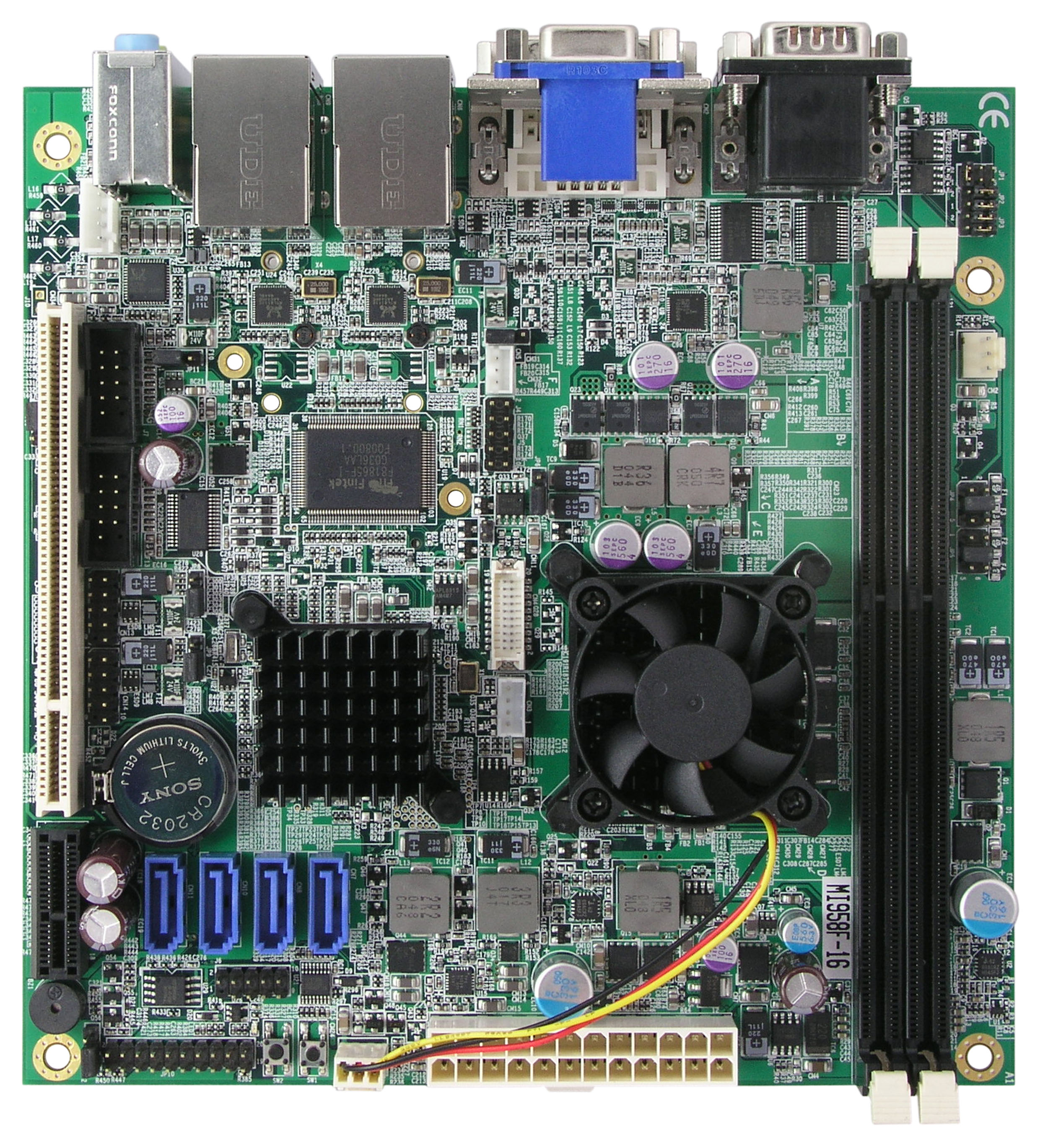 3 kg. This will be the latest Lenovo Yoga Air 14s 2023 Lenovo has announced the 2023 Yoga Air 14s laptop. It is not yet clear when the model will be released and how much it will cost, but the key features are already known …
3 kg. This will be the latest Lenovo Yoga Air 14s 2023 Lenovo has announced the 2023 Yoga Air 14s laptop. It is not yet clear when the model will be released and how much it will cost, but the key features are already known …
Apple M2 Ultra — the most powerful processor in Apple history (2 photos) the last announcement only convinced us of this. As part of the ano …
ASUS released the GeForce RTX 4070 Atlas Shark graphics card for the Chinese market ASUS introduced the GeForce RTX 4070 Atlas Shark graphics card for the Chinese market. The novelty belongs to the Megalodon series, is based on …
Inno3D showed the GeForce RTX 4070 and RTX 4060 Ti with «hidden» power connectors Inno3D is preparing to release two very interesting video cards of the GeForce RTX 4070 and RTX 4060 Ti models. Feature of the new GeForce RTX 4070 AX eS …
«The most powerful chip in the world» Apple M2 Ultra showed a result at the level of Intel Core i9-13900K and AMD Ryzen 9 7950X in Geekbench Apple unveiled the M2 Ultra chip at WWDC 2023 this week. It was recently tested on the Geekbench benchmark. …
It was recently tested on the Geekbench benchmark. …
AMD Ryzen 7 7800X3D Test for AM5 Platform: Best Gaming Processor AMD Ryzen 7 7800X3D processor with additional cache is ideal for gaming systems, it contains only one active chiplet of eight processors …
Honor introduced 90 Lite: 108 MP camera and Dimensity 9 processor0004 Last month, Honor announced a new series of smartphones Honor 90, which includes two devices: Honor 90 and 90 Pro. Now the Chinese pro …
The expert compared the GeForce RTX 4060 Ti and GeForce RTX 3070 video cards in 10 AAA games — which one to buy in 2023? Tested on PC with Intel Core i7-13700K processor, ASUS ROG Strix Z790-E Gaming motherboard, 32GB DDR5-6000 RAM. Both graphic …
GeForce RTX 4050/4060 Laptop, Core i7-12650H or AMD Ryzen 7 7735H. Maibenben X527 and X577 9 laptops came out in Russia0004 Maibenben announced the start of sales in Russia of new laptops equipped with GeForce RTX 4050 Laptop and RTX 4060 Laptop graphics cards. …
…
The ultimate gaming laptop, the Razer Blade 14 just got better with Ryzen 9 7940HS and RTX 4070 graphics Powered by advanced AMD Ryzen 9 7940HS octa-core processor up to 5.2GHz . Responsible for graphics …
Razer opens pre-orders for Blade 14 2023 with Ryzen 9 RTX 4070, Ryzen 9 and QHD 240Hz screen: Razer gaming laptop unveiled Blade 14 2023 Razer has unveiled its latest gaming laptop, the Razer Blade 14. It features the new AMD Ryzen 9 7940HS processor, Nvidia GeForce RTX 4060/4070 Laptop, …
Razer Blade 14 2023 is a Ryzen 9 gaming laptop, RTX 4070 and 240Hz screen (3 photos) Razer introduced its latest gaming laptop Razer Blade 14. It is equipped with the new AMD Ryzen 9 7940HS processor, Nvidia GeForce RTX 4060/4070 Laptop, …
Tom’s Hardware experts named the best gaming processors in 2023 — from Intel Core i3-12100F and Ryzen 5 5600G to Intel Core i9-13900K and Ryzen 9 7950X3D Top models from Intel and AMD as of the second half of June 2023 named. Both budget and flagship models are in the top. The best processor …
Both budget and flagship models are in the top. The best processor …
These GeForce RTX 4070, RTX 4060 Ti and RTX 4060 graphics cards have something hidden from view. Inno3D introduced adapters with a hidden power connector Inno3D showed a video card with a hidden power connector a week ago, and now it has introduced serial adapters with such a solution. The company pre… following parameters: Operating system: Windows 11 Process …
New Article: HUAWEI MateBook 16s 2023 (CREFG-X) Laptop Review: Large Screen and Powerful CPU The MateBook 16s is a series of laptops with a rare combination of 16-inch screen performance and 3:2 aspect ratio. The 2023 model is equipped with 14 cores …
The expert compared the GeForce GTX 770 and GeForce RTX 4070 video cards in 11 games — what has changed in 10 years? Tested at 1080p. Results: CYBERPUNK 2077 — 26 fps (GeForce GTX 770), 208 fps (GeForce RTX 4070). Horizon Zero Dawn — 36 . ..
..
The strange entertainment of Chinese dealers. GeForce RTX 4070 FE video cards are sold almost one and a half times more expensive than the recommended price While video cards continue to be actively cheaper everywhere, dealers in China decided that the demand for GeForce RTX 40 Founders Edition adapters is as …
The OneXFly game console from the creators of OneXPlayer is presented: 8-core Ryzen 7 7840U, 7-inch 120Hz Full HD screen and lots of backlight The OneXFly handheld game console, which is behind the developers of well-known conso…
Minisforum Ryzen 9 7940HS mini-PCs tested in games [VIDEO] The RandomGaminginHD YouTube channel author decided to check whether compact computers are really suitable for games, as advertised by manufacturers. …
China-only version of the GeForce RTX 4070 introduced PNY has unveiled its new graphics card, the PNY GeForce RTX 4070 Blower. She received special cooling with a turbine. You can buy an adapter only in …
She received special cooling with a turbine. You can buy an adapter only in …
Processor, cameras, screen: OnePlus first foldable smartphone revealed OnePlus is gearing up to launch its first foldable smartphone, the OnePlus Fold. Its announcement is expected in the summer. But despite the fact that there is still …
PNY introduced the GeForce RTX 4070 Blower graphics card PNY officially introduced the unusual GeForce RTX 4070 Blower graphics card, which, as the name suggests, uses a cooling system type .. .
Which processor to get for a budget computer in 2023: Core i3-12100 vs. Ryzen 5 5500 after all…
AMD will actually do it. The Ryzen 5 5600X3D gaming processor will be released on July 7 at a price of only $230 Oh…
The Honor 30 Lite 5G smartphone will receive a Dimensity 800 processor and a 6.5-inch screen The gadget will also please with a screen refresh rate of 90 Hz. The journalists of the 3DNews portal managed to find out that the new smartphone from the Honor brand model 30 Lit …
The journalists of the 3DNews portal managed to find out that the new smartphone from the Honor brand model 30 Lit …
How much worse is the mobile GeForce RTX 4060 Laptop than the desktop one? Tests show that sometimes the first one is even faster than 0005
AMD to release Ryzen 5 7500F hexa-core desktop processor without integrated graphics AMD is about to release another Ryzen 7000 series desktop processor, the Ryzen 5 7500F hexa-core. One of its key features …
AMD is preparing an ultra-budget Ryzen 3 5100 processor — it will cost less than $100 Information about the Ryzen 3 5100 has been disclosed by Tom’s Hardware citing GIGABYTE. The processor has been seen in the list of compatible mat…
GPU overclocked to 4230 MHz — the record is again set by ASUS GeForce RTX 4090 ROG Matrix Overclockers continue to compete in overclocking the graphics processor of the flagship GeForce RTX 4090 video card.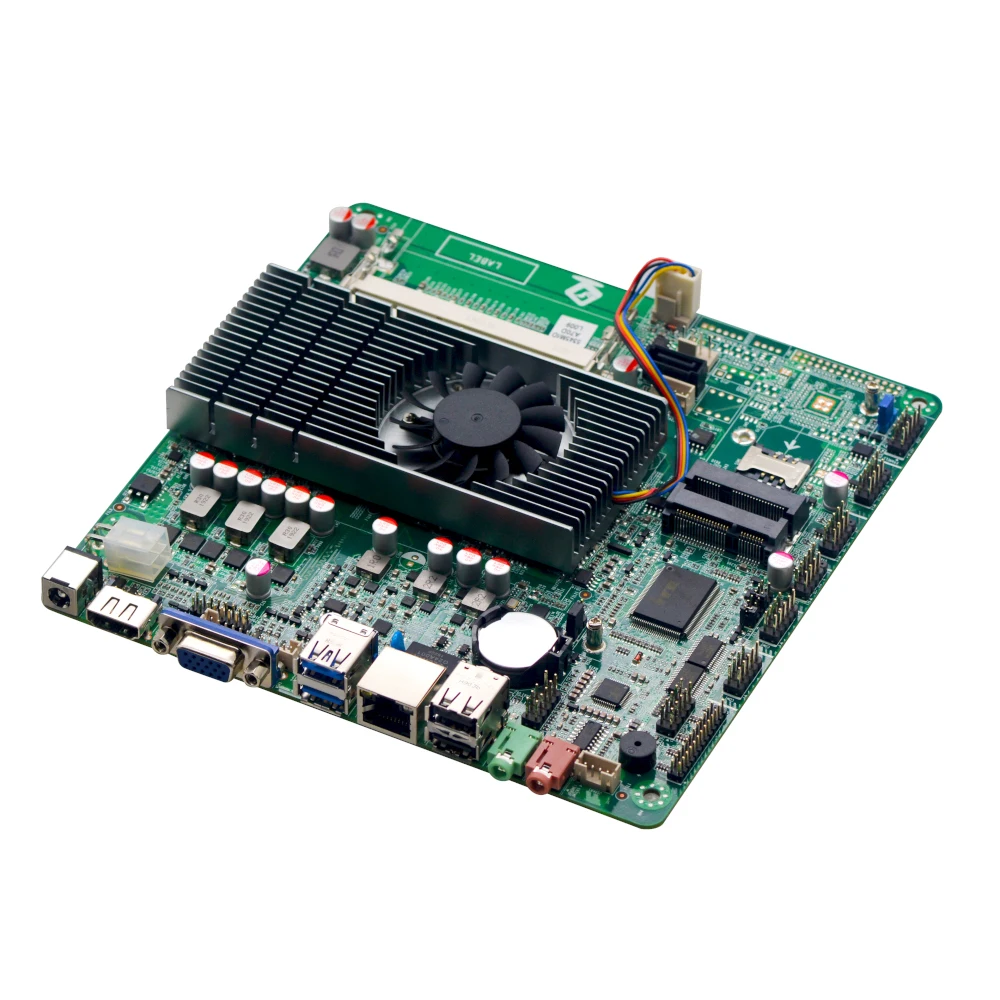 , huge screen and waterproof. Infinix Hot 30 5G unveiled Infinix has unveiled the Hot 30 5G smartphone, which is a step up from the Hot 30 4G. The novelty will debut in India with a price of $150 …
, huge screen and waterproof. Infinix Hot 30 5G unveiled Infinix has unveiled the Hot 30 5G smartphone, which is a step up from the Hot 30 4G. The novelty will debut in India with a price of $150 …
New ASUS ROG Magic 14: dual displays, RTX 4060, Ryzen 9 7940HS and just 19.5mm thick ASUS has unveiled the ASUS ROG Magic 14 gaming laptop. …
New ASUS VivoBook 16 Gets NanoEdge OLED Screen, AMD Ryzen 7000H Processors ASUS has expanded its VivoBook series with the introduction of the new VivoBook 16. The new VivoBook 16 is housed in a thin and light chassis, and is equipped with a …
Minisforum EM680 Powerful Mini PC Introduced Minisforum has added another exciting new addition to its range of very compact PCs — the EM680 model has dimensions of 80:80:43 mm and a volume of 250 ml. …
AMD Readying Ryzen 5 5600X3D Processor The upcoming AMD Ryzen 5 5600X3D Processor with 3D V-Cache technology has been leaked online and is likely to be the best gaming chip for . ..
..
Introduced laptop Razer Blade 14 2023 Razer has expanded its range of laptops with the Razer Blade 14 2023, based on the 8-core 16-thread AMD Ryzen 9 7940HS chip.
Razer Unveils Updated Blade 14 with AMD Ryzen 9 7940HS Processor and RTX 40 Series The Blade 14 is one of Razer’s best gaming laptops that the company is constantly updating. Today, the brand introduced a new version of the Blade 14, which …
Razer has updated the Blade 14 series of laptops, making them even more powerful Razer has updated its Blade 14 laptop, which it launched in 2021, with significant improvements to its hardware. …
Gigabyte is preparing to release the video card GeForce RTX 4070 Ti AORUS WaterForce with a water block and LSS At the disposal of the VideoCardz resource were renders of the planned release of video cards GeForce RTX 4070 Ti AORUS WaterForce Xtreme and AORUS WaterForce X …
900 03 Expert tested Ryzen 7 7800X3D and Ryzen 7 7700X processors in 10 AAA games — which processor to buy in 2023? Video Test: Test Bench: Operating System: Windows 10 Pro Motherboard: Gigabyte X670E AORUS MASTER CPU Cooler: Arctic Liqu. ..
..
PC can be a daunting task, especially when it comes to convenient and proper routing of power cables in the case. Com …
Neither Asus, nor MSI, nor Gigabyte offer such a GeForce RTX 4070. PNY Unveils Turbine 9 Blower Model0004 PNY introduced the GeForce RTX 4070 Blower graphics card, equipped with a «turbine», that is, a centrifugal fan cooling system …
AMD will release an affordable Ryzen 5 7500F processor — the first Ryzen 7000 without integrated graphics AMD Ryzen 7000 have integrated graphics chips. And this was the main difference from the current Int series …
The 12V-2×6 connector is already used on GeForce RTX 4070 Founders Edition 9 video cards0004 NVIDIA and PCI-SIG are well aware of the problems associated with the 12VHPWR socket, so a new connector (improved) is now being actively introduced, which … 5100 More than a year ago, a number of leaks claimed that AMD was preparing to release several more models of desktop processors from the Vermeer, Cez families .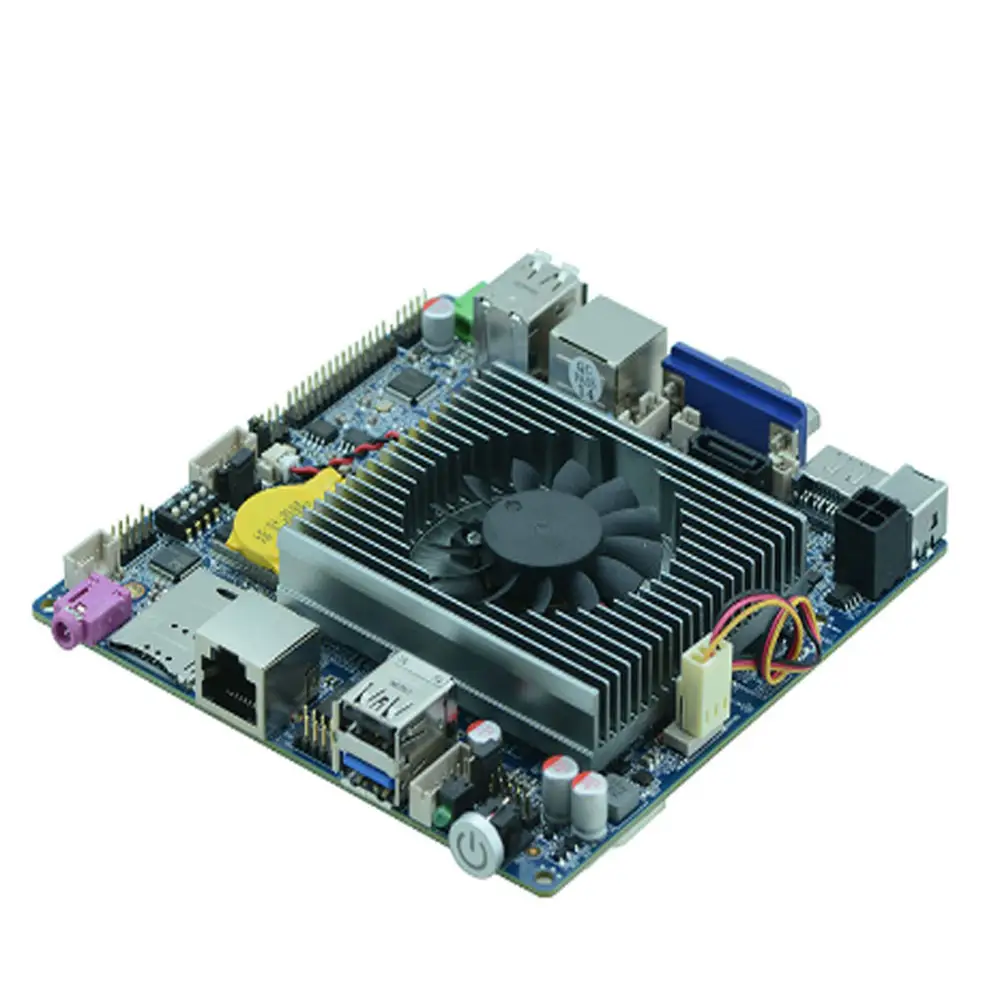 ..0 ROG Matrix The ASUS GeForce RTX 4090 ROG Matrix is the first graphics card in history to hit the 4GHz GPU overclock mark. The record was held by …
..0 ROG Matrix The ASUS GeForce RTX 4090 ROG Matrix is the first graphics card in history to hit the 4GHz GPU overclock mark. The record was held by …
An expert compared the fresh Ryzen 5 5600X3D processor with Ryzen 5 5600X and Ryzen 7 5800X3D in modern games — is there a big difference? The chip was tested on a PC with the flagship GeForce RTX 4090 graphics card and 32 GB of DDR4-3600 RAM. Results vs. Ryzen 5 5600 …
Buy a Ryzen processor and get Starfield for free — AMD announced a collaboration with space game Previously, Bethesda Softworks announced a collaboration with AMD to optimize Strafiled for both Xbox and PC, which use Ryz series processors … 6 speakers in a laptop weighing 1.3 kg. Lenovo Yoga Air 14s 2023 will go on sale on July 29 Lenovo announced the Yoga Air 14s 2023 business laptop in early June, and now the company has revealed the start date of sales: the device will be available for purchase at .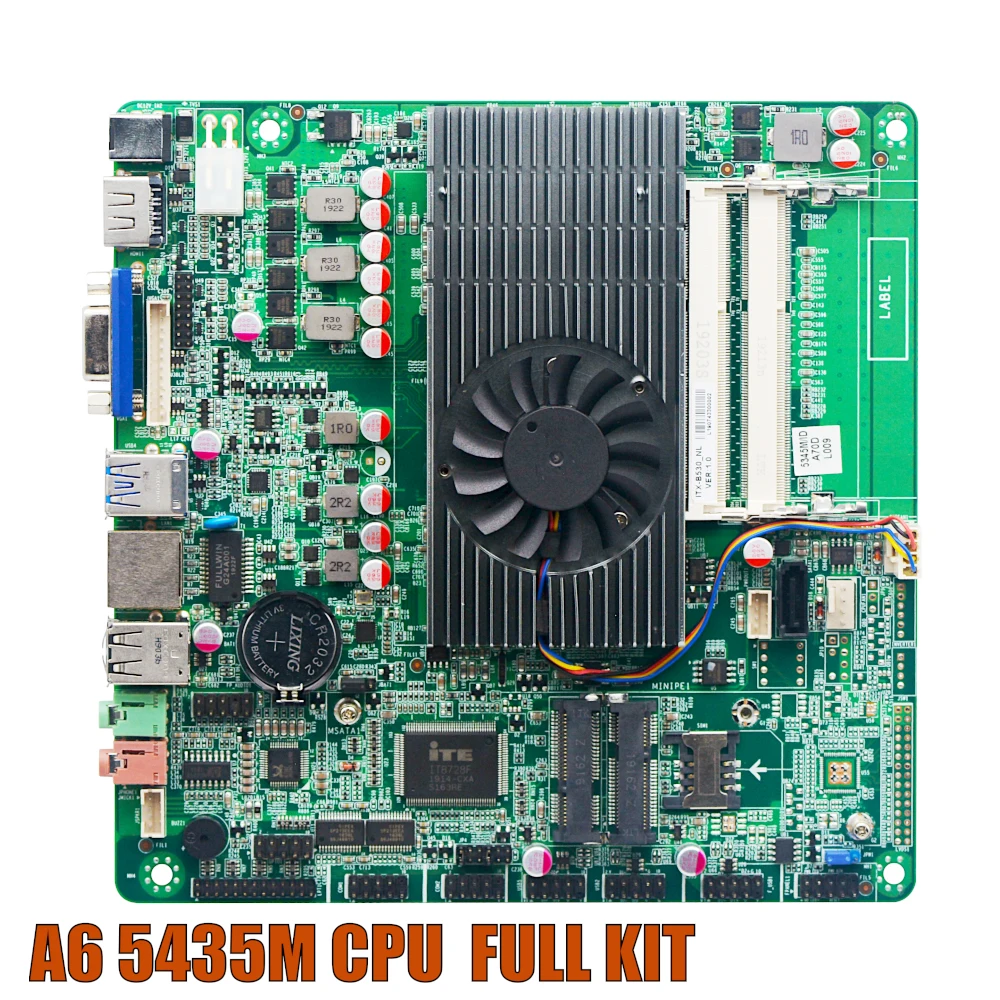 ..
..
10-inch 2K screen with 8 GB of RAM for $170. Teclast T40S tablet unveiled Teclast has unveiled the T40S tablet, which stands out for having a 2K screen for under $200. The novelty received an IPS panel with a diagonal …
PNY introduced the GeForce RTX 4070 Blower Edition with a turbine cooler PNY introduced the GeForce RTX 4070 Blower Edition video card at Computex 2023, equipped with a cooling system with a tangential …
2K screen, up to 14 GB RAM and 6000 mAh for $100. Alldocube iPlay 50 2023 planets introduced The Alldocube iPlay 50 2023 tablet computer debuted in China, which local media called one of the most affordable in its category. Device …
AMD Ryzen 7 7735HS, GeForce 4060 Laptop, 64GB RAM, 144Hz matte IPS screen. XMG Apex 15 and Apex 17 Laptops Unveiled XMG has unveiled the latest Apex 15 and Apex 17 laptops featuring AMD Ryzen 7 7735HS processors, Nvidia GeForce 4050 Laptop graphics cards and.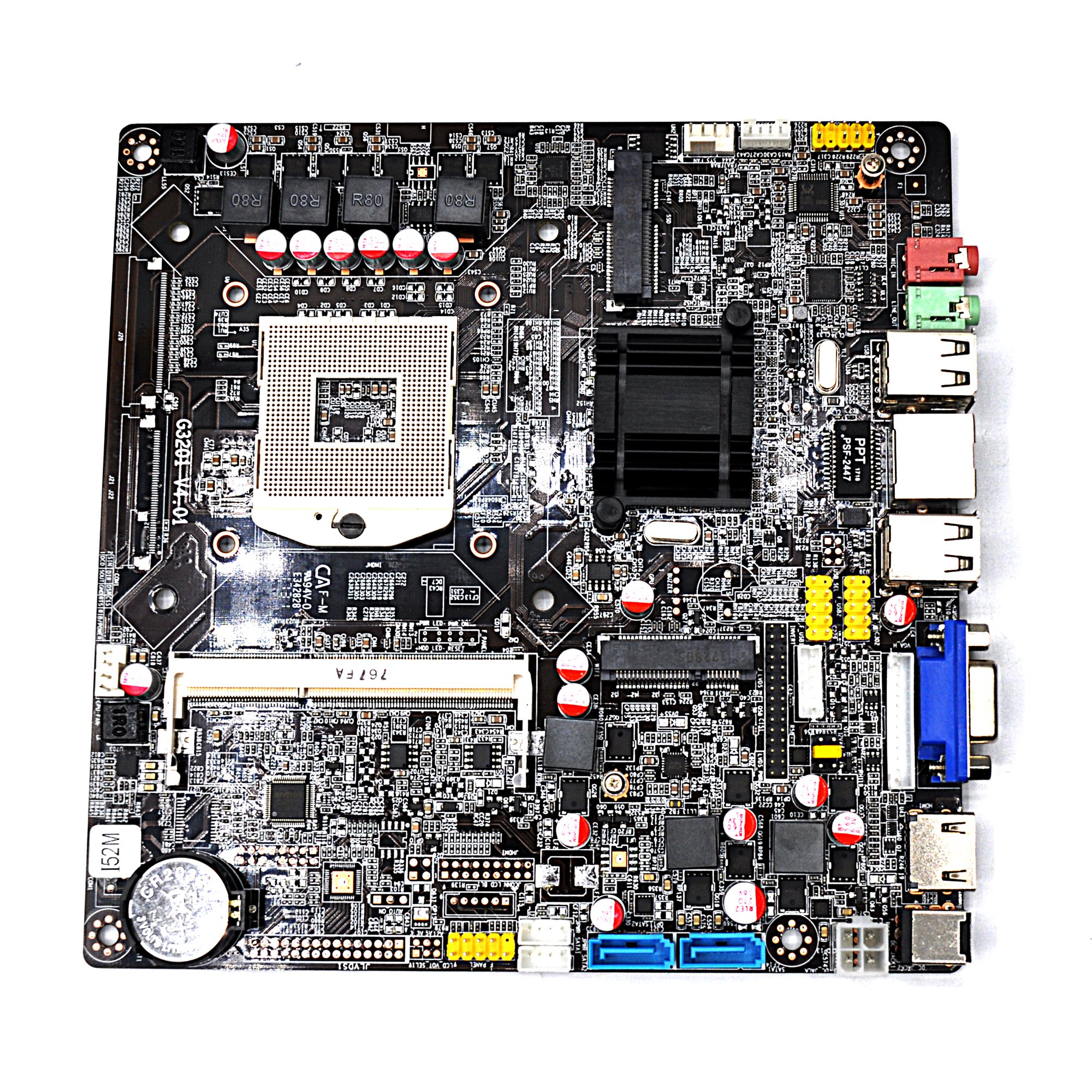 ..
..
Apple announces its most powerful processor ever Apple has made significant strides in recent years in the transition to its own processors, and the latest announcement only convinced us of this. …
Lightweight and powerful BMW Motorrad M 1000 XR motorcycle unveiled BMW Motorrad, a motorcycle brand and division of the German car manufacturer BMW, has unveiled a prototype motorcycle M 1000 XR. It is position …
INNO3D hides the power connector on the example of the GeForce RTX 4070 9 video card
Razer launches Blade 14 2023 compact gaming laptop with Ryzen 9 7940HS and GeForce RTX 4070 Razer announced the start of taking orders for the compact gaming laptop Razer Blade 14 2023. A key feature of the novelty is its …
Razer introduced a compact gaming laptop with NVIDIA RTX 4070 and AMD Ryzen 9 processor7940HS Razer has announced its new gaming laptop — Razer Blade 14. The novelty combines AMD’s Ryzen 9 7940HS processor with RTX graphics … Blade 14. The 2023 model retained its compact dimensions and light weight …
The novelty combines AMD’s Ryzen 9 7940HS processor with RTX graphics … Blade 14. The 2023 model retained its compact dimensions and light weight …
The updated Razer Blade 14 (2023) received a GeForce RTX 4070 9 graphics card0004 Razer has announced the launch of its new Blade 14 gaming laptop. Featuring an all-new AMD Ryzen 9 7940HS processor with the latest laptop graphics… and a 50 MP triple camera for €170 The gadget received a 6.75-inch display with HD + resolution and a refresh rate of 90 Hz, as well as an eight-core Unisoc T606 processor. The chip works in pairs …
Gainward GeForce RTX 4070 Ghost (12 GB) video card: modest backlight, quiet cooling system, not for overclocking Gainward GeForce RTX 4070 Ghost (12 GB) card performs slightly better than GeForce RTX 3080 (10 GB) and competes with Radeon RX 68 … Razer has released Razer Skins Vinyls in a variety of colors and patterns for external customization of various gaming devices, allowing . ..
..
A curved screen that resists drops. Honor X50 will be presented on July 5 Honor has confirmed that the new Honor X50 smartphone will be officially launched on July 5th. Today, an official representative revealed some info…
New Article: Gainward GeForce RTX 4070 Phoenix GS Video Card Review: Looks Cooler than The Gainward GeForce RTX 4070 Phoenix GS has several attributes of a high-end graphics card. The device is equipped with a massive cooler and …
MSI GeForce RTX 4070 Gaming X Trio (12 GB) video card: extremely quiet cooler, good overclocking potential, stylish backlighting MSI GeForce RTX 4070 Gaming X Trio (12GB) performs slightly better than GeForce RTX 3080 (10GB) and in games with lu … 99 MB cache for $229 AMD surprises the new Ryzen 5000 series desktop processor with Zen 3 architecture. This is a chip with additional cache …
The ideal low-cost processor for gaming — AMD Ryzen 5 will go on sale July 7 5600X3D for $229, but there is a nuance The new chip will be the most inexpensive in the line of X3D processors with 3D V-Cache.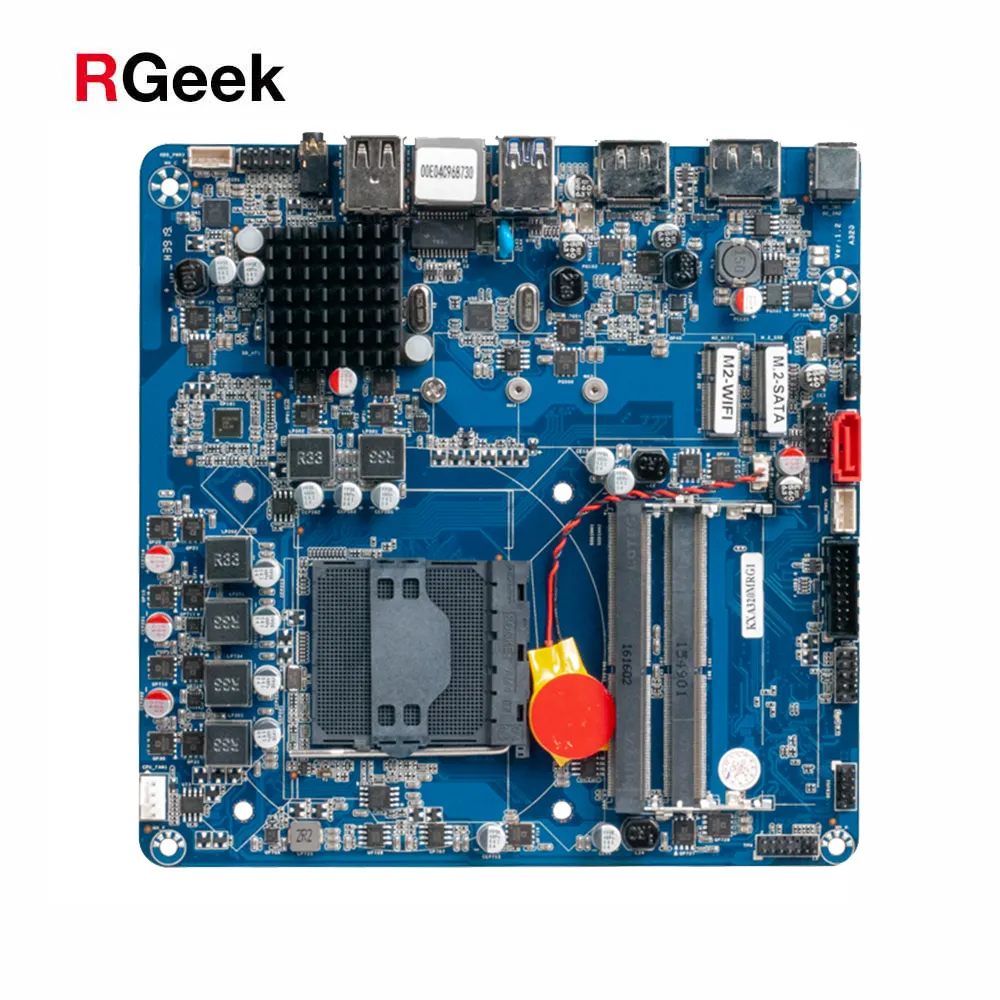 It is compatible with AM4 motherboards and RAM format …
It is compatible with AM4 motherboards and RAM format …
ASUS ROG Flow X13 with Ryzen 9 7940HS is priced at $1250 AMD Ryzen 9 79 …
Core i5, 3:2 screen and Windows at $440. Chuwi UBook X 9 tablet introduced0004 Chuwi has introduced a Windows tablet called the UBook X, which at $440 offers a Core i5 CPU and a fairly large screen. …
Excellent budget gaming PC processor: Ryzen 5 5600X3D first review The Ryzen 5 5600X3D gaming processor delivers outstanding gaming performance and is available for purchase today. First Review …
Beelink SER6 MAX Powerful Gaming Mini PC Introduced Beelink has announced a new model of gaming mini PC based on AMD Ryzen 7 series processor. …
AMD Ryzen 7 7735HS Gaming Mini PC Introduced in Four Color Choices Beelink has unveiled its new mini PC. According to the manufacturer, it can be a great alternative to a full-size gaming computer .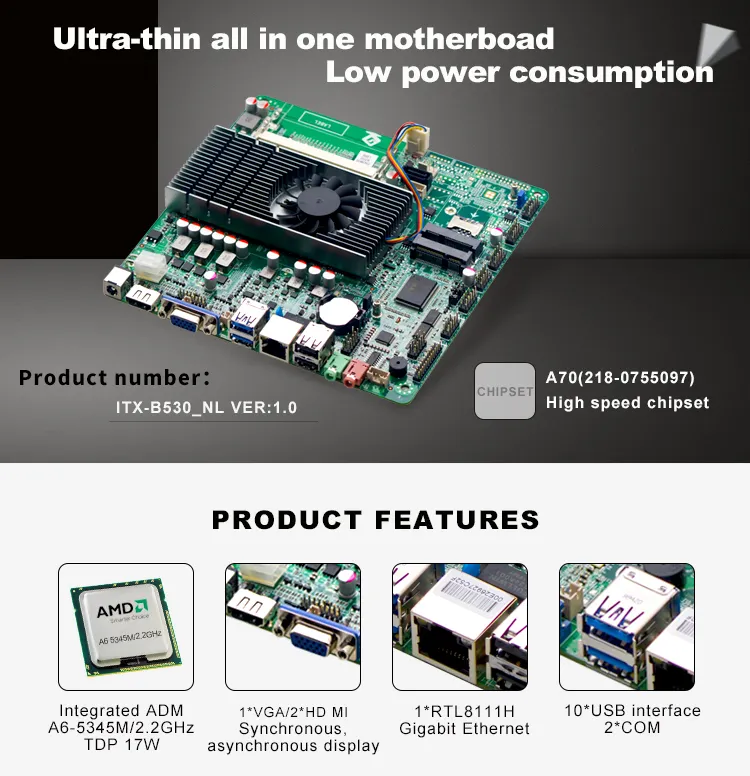 ..
..
An expert compared AMD Ryzen 5 5600X3D and Ryzen 7 5800X3D processors in 10 games — which processor with 3D V-Cache is better? Test bench: OS: Windows 11 Motherboard: ASUS ROG X570 Crosshair VIII Hero CPU cooler: be quiet! Dark Rock Pro 4Video card: GeForce RTX 4 …
Lenovo ThinkPad T16 2023 Ryzen Edition gets 4K screen Lenovo has expanded its range of laptops with a new generation of ThinkPad T16 models based on new AMD Ryzen chips. We are talking about two pro…
3.2K 120Hz screen and a powerful 8-core Ryzen 7 7840HS for only $665. RedmiBook Pro 15 Ryzen Edition 2023 sales start in China Today in China, Xiaomi announced the price and launched pre-sales of the RedmiBook Pro 15 Ryzen Edition 2023 laptop.0005
Cooler Master Susurro — a quiet copper miracle for AMD64
One of the arguments in the heated debate between fans of AMD and Intel products has recently become the hotness factor. That is, some argue (and others are trying hard to refute) that the latest generation of AMD Athlon 64 processors has significantly lower power consumption and heat dissipation than the latest competitor products in the Desktop segment. At the risk of incurring the disgrace of both, we will not now discuss who is actually right;). And let’s talk, in particular, about what exactly the advantages of using energy-saving technologies in AMD K8 processors promise to an ordinary user, except for, in fact, a smaller fee for an electric meter. 🙂 And another reason for such a conversation was the release by the eminent Cooler Master (Cooler Master company) of a new cooler model for the AMD platform — with the sonorous name Susurro.
At the risk of incurring the disgrace of both, we will not now discuss who is actually right;). And let’s talk, in particular, about what exactly the advantages of using energy-saving technologies in AMD K8 processors promise to an ordinary user, except for, in fact, a smaller fee for an electric meter. 🙂 And another reason for such a conversation was the release by the eminent Cooler Master (Cooler Master company) of a new cooler model for the AMD platform — with the sonorous name Susurro.
We have already discussed in our publications more than once what are the features and benefits of AMD Cool’n’Quiet power-saving technology used in AMD K8 architecture processors. Briefly, its essence is that while the processor is idle, the frequency of the Athlon 64 core can be reduced up to 1000 MHz with a simultaneous decrease in the supply voltage. As a result, if at full frequency under load such a processor consumes, say, 60-80 watts, then when idle, its heat dissipation drops to 10-20 watts! The key point here is that in AMD Cool’n’Quiet processor switching between modes with different frequency and supply voltage occurs in our experience almost instantly (on a microsecond scale), that is, if the PC processor is busy working occasionally (for example, when working in office programs, with graphic, audio and video editors, when listening to music or watching videos, as well as in many games), and not full time, then in those, even small, millisecond periods of time when it is idle, it switches to economy mode. As a result, the average heat dissipation of the processor becomes proportional to the percentage of its workload. That is, if, say, during active office work, the processor is loaded on average by about 10%, and when working with multimedia content, by 20-30 percent (judging by the CPU load measurements averaged over the time of passing the corresponding scenarios in the SYSmark 2004 package ), then the average processor heating will be conditionally proportional to these percentages (strictly speaking, when calculating the average heat dissipation, one should take into account not only the initial and final core frequencies and supply voltages, but also the time intervals during which the processor was in these states, but also , that in the first approximation, the processor consumption is proportional to square clock frequency, and there are also areas of the crystal where the frequency does not decrease — the memory controller, system bus, etc.).
As a result, the average heat dissipation of the processor becomes proportional to the percentage of its workload. That is, if, say, during active office work, the processor is loaded on average by about 10%, and when working with multimedia content, by 20-30 percent (judging by the CPU load measurements averaged over the time of passing the corresponding scenarios in the SYSmark 2004 package ), then the average processor heating will be conditionally proportional to these percentages (strictly speaking, when calculating the average heat dissipation, one should take into account not only the initial and final core frequencies and supply voltages, but also the time intervals during which the processor was in these states, but also , that in the first approximation, the processor consumption is proportional to square clock frequency, and there are also areas of the crystal where the frequency does not decrease — the memory controller, system bus, etc.).
In these categories of reasoning, the bulk of the PC is simply idle most of the time , which means that processors with modern energy-saving technology (be it AMD Cool’n’Quiet or Enhanced Intel SpeedStep Technology) emit significantly less heat than at maximum.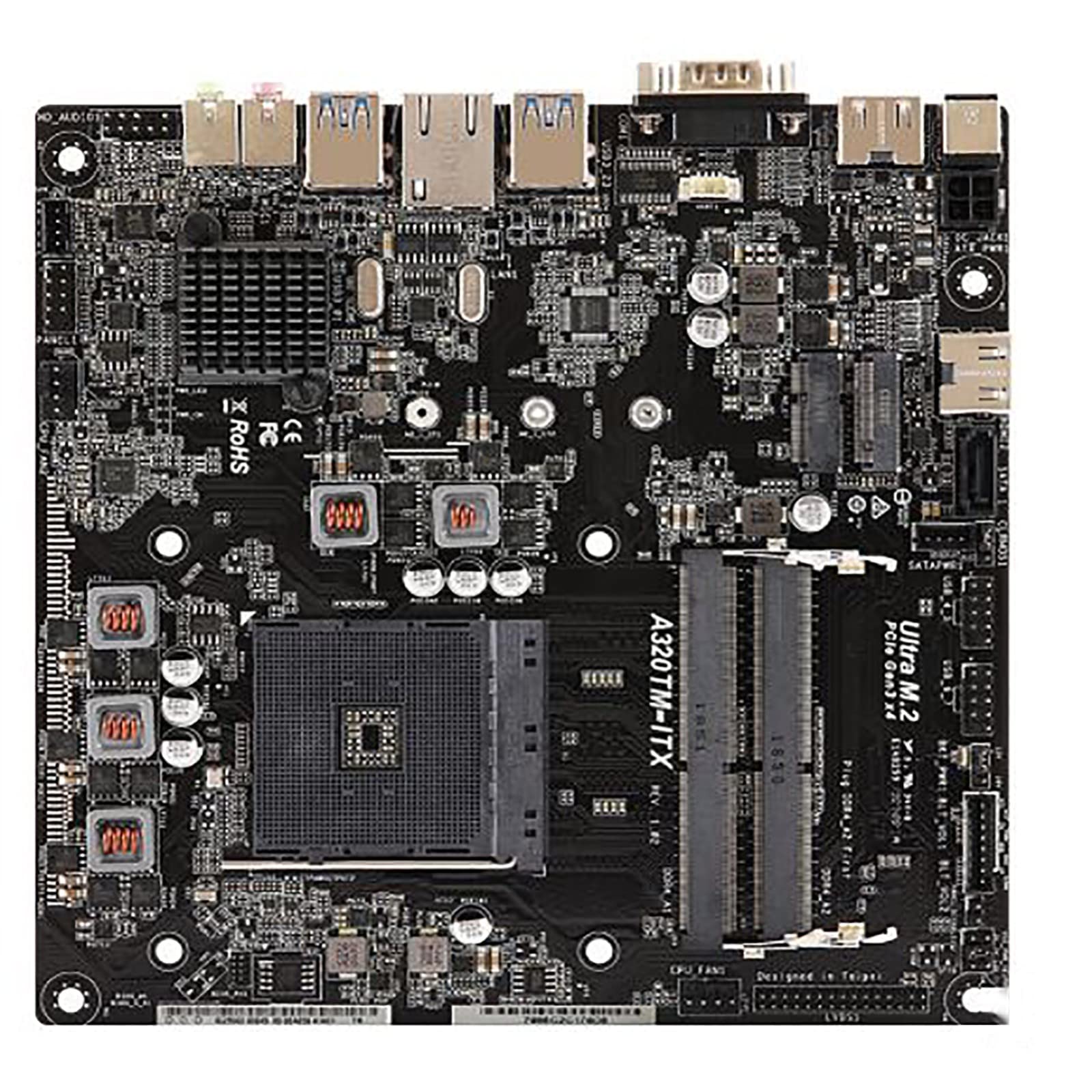 In order to translate this bonus not only into lower material costs for electricity, but also into simple human comfort — that is, to reduce the noise of computers — many manufacturers have long begun to equip their cooler models with special circuits that control the propeller speed from a temperature sensor — the colder it is the lower the speed and the noise emitted by the cooler. Indeed, why turn the impeller at full speed, if only a small fraction of the full (at full speed) passport heat transfer of the cooler is enough to cool the processor at idle or at low load (see above)? Yes, and in the BIOS of motherboards they began to build in the functions of controlling the speed of rotation of the cooler depending on temperature.
In order to translate this bonus not only into lower material costs for electricity, but also into simple human comfort — that is, to reduce the noise of computers — many manufacturers have long begun to equip their cooler models with special circuits that control the propeller speed from a temperature sensor — the colder it is the lower the speed and the noise emitted by the cooler. Indeed, why turn the impeller at full speed, if only a small fraction of the full (at full speed) passport heat transfer of the cooler is enough to cool the processor at idle or at low load (see above)? Yes, and in the BIOS of motherboards they began to build in the functions of controlling the speed of rotation of the cooler depending on temperature.
The trouble with most coolers with thermal sensors (including the so-called boxed coolers) is that they have a thermistor, as a rule, located on the fan stator board and at the same time measures the temperature of the air injected into the cooler (which, as a rule, is enough cold). As a result, the whole idea of thermal speed control is leveled and the control itself becomes not very effective, which has been repeatedly noted (see, for example, articles here, here and here). It would be much more correct to regulate the speed depending on the temperature of the processor core, which is done through the BIOS of a number of motherboards. However, this is also not a very optimal approach, since a dynamically changing core temperature with an incorrect regulation characteristic will make the fan often “howl”, quickly changing the rotation speed. In addition, if it is possible for a circuit placed in a cooler to change the speed several times, then it is problematic to reduce the speed even by half through the BIOS of motherboards (as a rule, the motherboard allows you to change the voltage on the propeller from +12 to +7 (less often +6 ) volts), and the noise level of the cooler due to such a “half-change” does not drop so drastically (although it’s a bird in the absence of fish and cancer).
As a result, the whole idea of thermal speed control is leveled and the control itself becomes not very effective, which has been repeatedly noted (see, for example, articles here, here and here). It would be much more correct to regulate the speed depending on the temperature of the processor core, which is done through the BIOS of a number of motherboards. However, this is also not a very optimal approach, since a dynamically changing core temperature with an incorrect regulation characteristic will make the fan often “howl”, quickly changing the rotation speed. In addition, if it is possible for a circuit placed in a cooler to change the speed several times, then it is problematic to reduce the speed even by half through the BIOS of motherboards (as a rule, the motherboard allows you to change the voltage on the propeller from +12 to +7 (less often +6 ) volts), and the noise level of the cooler due to such a “half-change” does not drop so drastically (although it’s a bird in the absence of fish and cancer). Moreover, with coolers that already have a built-in speed control circuit from the thermistor, voltage regulation from the motherboard is often simply problematic (the exception is the new four-wire fan control standard on LGA775 boards). As a result of all this, we get a typical situation when «the bottom wants, but the top cannot.» 🙂
Moreover, with coolers that already have a built-in speed control circuit from the thermistor, voltage regulation from the motherboard is often simply problematic (the exception is the new four-wire fan control standard on LGA775 boards). As a result of all this, we get a typical situation when «the bottom wants, but the top cannot.» 🙂
The problem with a cardinal reduction in the noise of the CPU cooling system at low load calculations can be solved by a cooler, where a thermal sensor measures the temperature of the radiator near its base: here the temperature does not change so dynamically (so that there are no howls) and well reflects the situation with the current, but average heat dissipation processor and, at the same time, the efficiency of its cooling by a specific cooler, depending on the air temperature and other factors. And in this case, the fan speed can be changed more than twice, providing a very significant reduction in noise when the processor is idle. This approach, of course, is not new. For example, back in 2000 (when there were no such hot processors ;)) I made an electronic FAN Speed circuit to control the fan speed from a temperature sensor that measures the temperature of the cooler heatsink. And for me all these years it was extremely strange to see that the majority of cooler manufacturers continue to sculpt a thermal sensor “in the air”. It is all the more pleasant to see a competent product from a well-known manufacturer that implements the idea of achieving silence in the right direction and achieves excellent results.
For example, back in 2000 (when there were no such hot processors ;)) I made an electronic FAN Speed circuit to control the fan speed from a temperature sensor that measures the temperature of the cooler heatsink. And for me all these years it was extremely strange to see that the majority of cooler manufacturers continue to sculpt a thermal sensor “in the air”. It is all the more pleasant to see a competent product from a well-known manufacturer that implements the idea of achieving silence in the right direction and achieves excellent results.
Susurro cooler and its characteristics
Susurro in Latin means whisper, rustle, rustle. By the way, this name is very popular in Latinophone countries and, in particular, in Latin America: there they call it various “quiet and secluded places”, where the soul finds peace (not in that sense ;)) and comfort.
Cooler Master’s Susurro cooler for AMD K8 processors
Information about the new Susurro cooler is now placed on the main page of the Cooler Master website, so it’s the company’s pride at the moment. And deservedly so, because a fairly compact cooler for the oldest and even future (including Socket M2) dual-core and single-core AMD processors provides effective cooling with a noise level of 16 dBA! It is intended, as already mentioned, for AMD processors with Socket 754/939/940/M2. Among such processors, AMD Athlon 64 X2 5000+ and higher, defunct Athlon 64 FX-59 (and higher), Athlon 64 4200+ and higher, AMD Sempron 3800+ and higher models and all Opteron series are noted on the package.
And deservedly so, because a fairly compact cooler for the oldest and even future (including Socket M2) dual-core and single-core AMD processors provides effective cooling with a noise level of 16 dBA! It is intended, as already mentioned, for AMD processors with Socket 754/939/940/M2. Among such processors, AMD Athlon 64 X2 5000+ and higher, defunct Athlon 64 FX-59 (and higher), Athlon 64 4200+ and higher, AMD Sempron 3800+ and higher models and all Opteron series are noted on the package.
The Susurro box proudly and almost on every side says: The Spirit of Silence, the world’s first (in the sense — the best) solution for AMD Dual Core (Socket M2) and Opteron CPU, specially optimized for systems small thickness, the best solution for Slim-systems.
The design of the compact but weighty (almost 700 grams) Susurro heatsink is quite primitive and traditional for modern advanced but not very expensive coolers — thin fins are welded onto a thick copper base.
Moreover, in this case they are oriented only in one direction — accordingly, the air from the cooler comes out only from two sides on the sides of the cooler.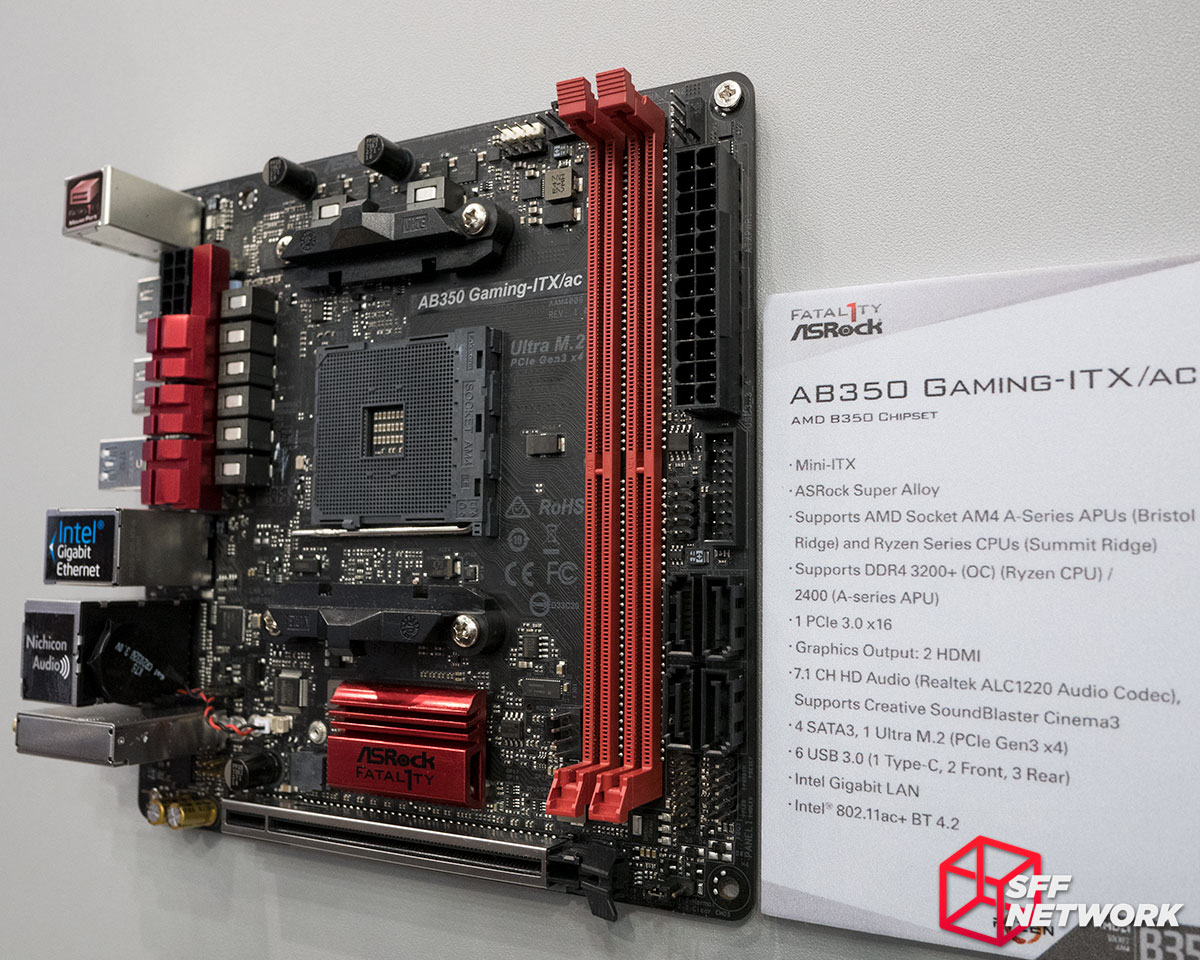 However, the manufacturer claims that the special «stepped» shape of the fins at the base allows air to escape both on the sides and below to improve the cooling of the periphery (see diagram).
However, the manufacturer claims that the special «stepped» shape of the fins at the base allows air to escape both on the sides and below to improve the cooling of the periphery (see diagram).
Among the main design features of this cooler is an ultra-quiet 92mm fan on a patented threaded plain bearing, which, according to the manufacturer, has better silence characteristics (with comparable durability) than popular rolling bearings (I remind you that conventional plain bearings have complaints about fragility).
Another progressive solution is a frameless fan (only a thin wire grill on top and sides). As a result, the cooler is perfect for slim-systems with a limited case thickness, where the main air intake is carried out not from the front, but from the sides of the cooler (see the diagram above).
I was somewhat surprised by the inscription on the fan — its maximum current consumption is 0.83 amperes, which is unexpectedly high for low-speed systems of this class (see table below). However, apparently this value also includes the current consumption by the built-in rotation speed control circuit from the temperature sensor.
However, apparently this value also includes the current consumption by the built-in rotation speed control circuit from the temperature sensor.
The fan speed itself is regulated (from 800 to 2800 rpm) by a built-in circuit controlled by a thermistor placed (attention!) on the cooler heatsink near its base, and not on the incoming air flow, as is usually the case in similar cases.
This allows you to control the fan speed more intelligently and optimally, see above (adjustment based on the temperature of the air blown into the cooler often causes considerable complaints and does not provide the proper efficiency and quietness of cooling). Unfortunately, the sensitive head of the temperature sensor, as it turned out, does not touch the copper base of the cooler itself (to be the most correct), but only a thin radiator fin at a distance of about 12 mm above the radiator, that is, it measures a deliberately lower temperature. Let’s hope that the control scheme takes this into account. 🙂
🙂
A feature of this design and the initially low-speed fan (less than 800 rpm with a cold heatsink) is that when the processor switches from low load (or inactivity) to high load, the temperature of its crystal first rises very quickly (faster, than with many other coolers). The matter is that the fan spin-up is a bit «late» in relation to the crystal temperature, since it is guided by the temperature not even of the cooler base, but of a thin radiator fin, which heats up with some time lag relative to the crystal. However, due to the massive base of the heatsink, this is not dangerous, that is, even at minimum speeds and a sharp jump in processor load, its crystal never has time to warm up to a level higher than the subsequent steady-state temperature value during long tests under this load (see, for example, the graph CPU warm-up dynamics in the desktop screenshot below, taken just for such a case). In general, this dynamic regulation also plays into the hands of ensuring maximum silence with an ample degree of cooling.
By the way, this cooler is protected by US, Taiwan and China patents (Taiwan Patent No. 225599, American Patent No. 6,731,504 and PRC Patent No. ZL3201417.1). More photos of this interesting product can be viewed on the manufacturer’s website.
Inside the cooler box is the cooler itself with a plastic protective cover, a user manual and a tube of branded and relatively thick thermal paste.
In my opinion, for AMD Athlon 64 processors with an already existing good heat spreader, it would be more preferable to use a less thick and thinner layer of thermal paste (including so that its excess is squeezed out from under the cooler under the pressure of the cooler to the processor).
Like the one, for example, with which the Zalmans are equipped. This will provide a better pressing of the processor to the base of the cooler and improve heat dissipation.
Technical characteristics of Susurro in comparison with two other participants in this comparison, who also claim low-noise cooling AMD Athlon 64, are shown in the table.
Table 1. Technical characteristics of the considered coolers.
| Model | Cooler Master Susurro (RR-KCT-T9E1) |
GlacialTech Igloo 7200 Light | Titan Vanessa S-type | ||
|---|---|---|---|---|---|
| Processors supported | AMD Socket 754/939/940/M2 9 0437 | AMD with Socket 754/939/ 940 | AMD Socket A/754/939/940/M2, Intel Socket 478 and LGA775 |
||
| n/a | |||||
| Weight, g | 685 | 398 | 550 | ||
| Radiator | |||||
| mm | 77x92x40 | 77x68x60 | 92x85x144 | ||
| Material | Copper 99.97% | Aluminum fins + copper base and three copper heat pipes | |||
| Fan | |||||
| Dimensions, cube mm | 92x92x25 (weight 75g) |
80x80x18 | 92x92x25 | ||
| Bearing | plain bearing with screw thread (patented Rifle bearing) | rolling bearing | one rolling bearing | Speed, rpm, ±10% | 800-2800 ( controlled by thermistor) | 1900 | 1200-2400 |
| Maximum capacity, CFM | n. a. 1.96-46.14 a. 1.96-46.14 |
||||
| Max. air pressure | n.a. | 12 | 12 | 12 | |
| Current consumption, A | 0.83 | 0.19 | 0.21 | ||
| Noise level, dBA | 16 (sound pressure at a distance of 1 m at medium load) |
20 | 20-29 | ||
Lifetime, thousand hours there are doubts how they were able to measure it with guarantee if the background level of the best quiet anechoic rooms is the same 16-17 dBA ;)). However, this noise level is ensured, of course, only at the lowest fan speeds (about 800 rpm, which is also quite low even for such coolers!), while at higher speeds the cooler makes much more noise.
Heat dissipation testsIn order not to mess with the results, posting page and a half listings for each of the parameters, 🙂 in this case, for comparison with Susurro, we decided to limit ourselves to only two typical representatives of the «silent cooling» tactics of AMD processors: a budget solution with an all-aluminum (copper-free) heatsink and a low-speed (but without built-in speed control) fan is our popular cooler GlacialTech Igloo 7200 Light, GlacialTech Igloo 7200 Light cooler. and a more expensive, bulky and universal (in terms of applicability to various platforms) solution is a rather fresh Titan Vanessa S-type cooler on thermotubes Titan Vanessa S-type cooler. with «overhead» fan and block (resistor) for manual speed control. In the position of maximum speed of this regulator, the rotation speed of this copy of Vanessa was 2800 rpm, and in the position of minimum speed — about 2000 rpm. We tested it only in the last mode (that is, at the minimum standard speed), because we want to get less noise out of nothing here. 😉 Tests were performed with an AMD Athlon 64 4000+ processor on a Foxconn WinFast NF4SK8A8KRS motherboard in standard modes with a fanless video card from S3 on the PCI bus. The board was located inside a standard (closed) middle-ATX case (model R202 Li from 3R System), which has a built-in indicator measuring three additional temperatures controlled the ambient temperature — at the “entrance” to the cooler near its fan and outside the case). To measure the temperature of the processor and motherboard, the temperature sensors built into them were used, registration was carried out using the SuperStep programs (complete board utility) and S&M 1.7.6 (with simultaneous monitoring of a number of other system parameters, see screenshot). The computational load of the processor was simulated in the S&M program for three different load levels: 100% (the maximum possible warm-up, which is practically not encountered in real work), 75% (approximately corresponds to the situation when playing 3D shooters) and 50% (according to the creator S&M is the level of typical office work, although such a statement needs further verification). Of course, measurements were also taken with the system and processor completely idle (0%), when the processor frequency was always 1000 MHz instead of the prescribed 2.4 GHz. At the same time, the speed of the cooler’s fan was also registered — for our hero’s rivals it was constant by definition (2280 and 2000 rpm, respectively), while for the Susurro cooler it varied depending on the degree of heating/loading (see diagrams). Let’s start with the hottest case of 100% load in S&M. Yes, the Susurro cooler is outperformed by both rivals here (4 and 7 degrees, respectively), but you shouldn’t immediately shout “Atu him!”. Let’s think about it — the maximum temperature of the processor, even with such an unrealistic load, did not exceed the quite permissible 65 degrees, leaving some margin for additional heating. But the fan speed increased relative to the minimum level very slightly — only up to 1360 rpm. And the cooler worked very quietly (see below). Although if the Susurro propeller buzzed at all its 2800 rpm, then the cooler would surely overtake these two rivals. But it would cease to justify its name! That is, Susurro competently provided the system with exactly the cooling that it needs at the moment, and at the same time cooled the motherboard even better than the much faster GlacialTech Igloo 7200 Light. The situation in “games” (that is, at 75% load) resembles the previous one with the difference that this time Susurro lost even more to his rivals in temperature (6 and 8 degrees, respectively), but it’s a sin to reproach him with this, because 51 degrees of the processor is quite normal, but the fan speed has dropped to an almost inaudible 770 rpm! And the board is again cooled better than with the Igloo 7200 Light. Supposedly office work (50% load in S&M) continues the good tradition of Susurro’s silent operation, and you don’t have to worry about the temperature here at all. And finally, in idle mode, the only difference between these three coolers is the temperature of the motherboard near the processor, which is quite decent for Susurro. Acoustics testsNoise measurements of coolers were carried out using a standard state-of-the-art (GOST 17187-81) sound level meter of the 1st accuracy class VShV-003-M3 of domestic production and a complete condenser measuring capsule M-101. The sound pressure level was measured at a distance equivalent to 1 meter (according to GOST), weighted by the “A” type spectral curve. Because special we did not have an anechoic acoustic chamber for these measurements, and the background level of our quiet room according to this device was 20-21 dBA during the measurements (which in some cases exceeded the expected noise level of coolers, see the specifications above; believe me — 20 dBA this is very quiet ! :)), it was decided to proceed as follows. The sound pressure level of coolers measured by us at an equivalent distance of 1 meter cannot always be exactly compared with the values indicated in the specifications of coolers, since the latter reflect the sound power level measured by several microphones in a hemispherical free field, and not pressure (usually for pressure readings are slightly higher than for power). The first obvious pattern is that the faster we rotate, the more noise. 🙂 And vice versa — almost proportionally, regardless of the cooler. 😉 Looking deeper into these data, we come to the conclusion that even at 100% CPU load, Cooler Master Susurro left its rivals far behind in noiselessness: 24 dBA against 31-32 dBA — that’s impressive. Moreover, already at 75% load (that is, in games, not to mention office work), Susurro is enough 800 rpm to effectively cool a very powerful system based on Athlon 64 4000+ and at the same time emit those same almost inaudible 16-18 dBA, which is stated in its specifications. In fairness, we measured the noise of the Igloo 7200 Light and at speeds as low as 1400 rpm. using the BIOS of the motherboard. The difference is still noticeable (18 dBA vs 22 dBA), although the Igloo’s cooling efficiency drops dramatically. To complete the picture, we artificially warmed up the Susurro to measure its noise at full 2800 rpm. The result was not surprising — 45 dBA is quite consistent with powerful cooling systems, but, as it turns out, are they really necessary in this case? Conclusion The conclusions will not be lengthy: modern AMD Athlon 64 processors, having a fairly high heat dissipation at the maximum, are able to save significant power in real operation, effectively using AMD Cool’n’Quiet technology. And these are not empty advertising words, but reality (given to us in sensations and figures;)). And finally — a couple of spoons in a barrel… Cooler Master does not value its originality cheaply, asking for Susurro a price of around 30-35 dollars. However, in my opinion, it’s worth it. | |||||

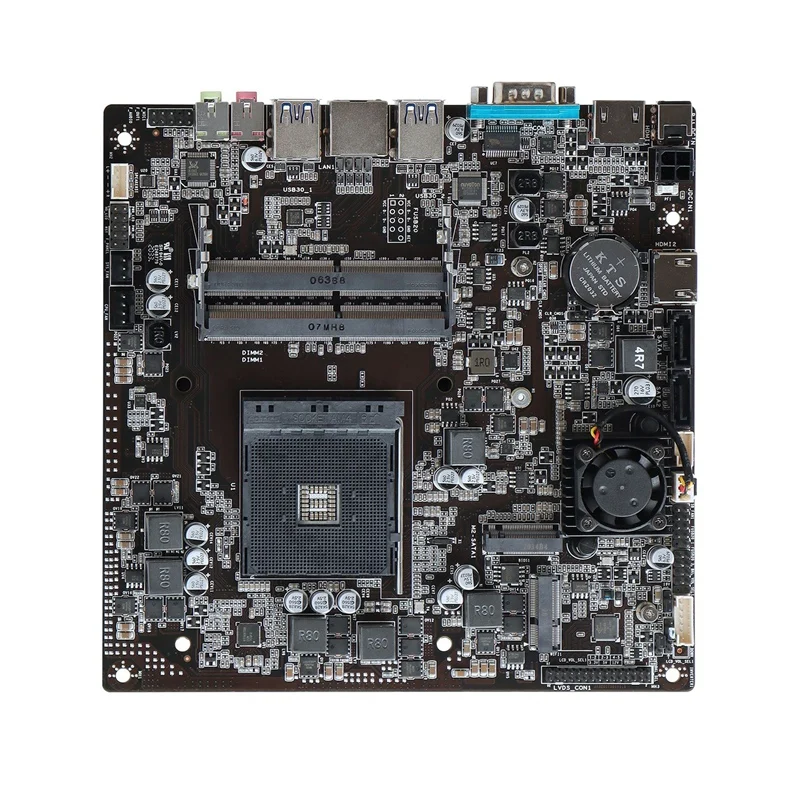
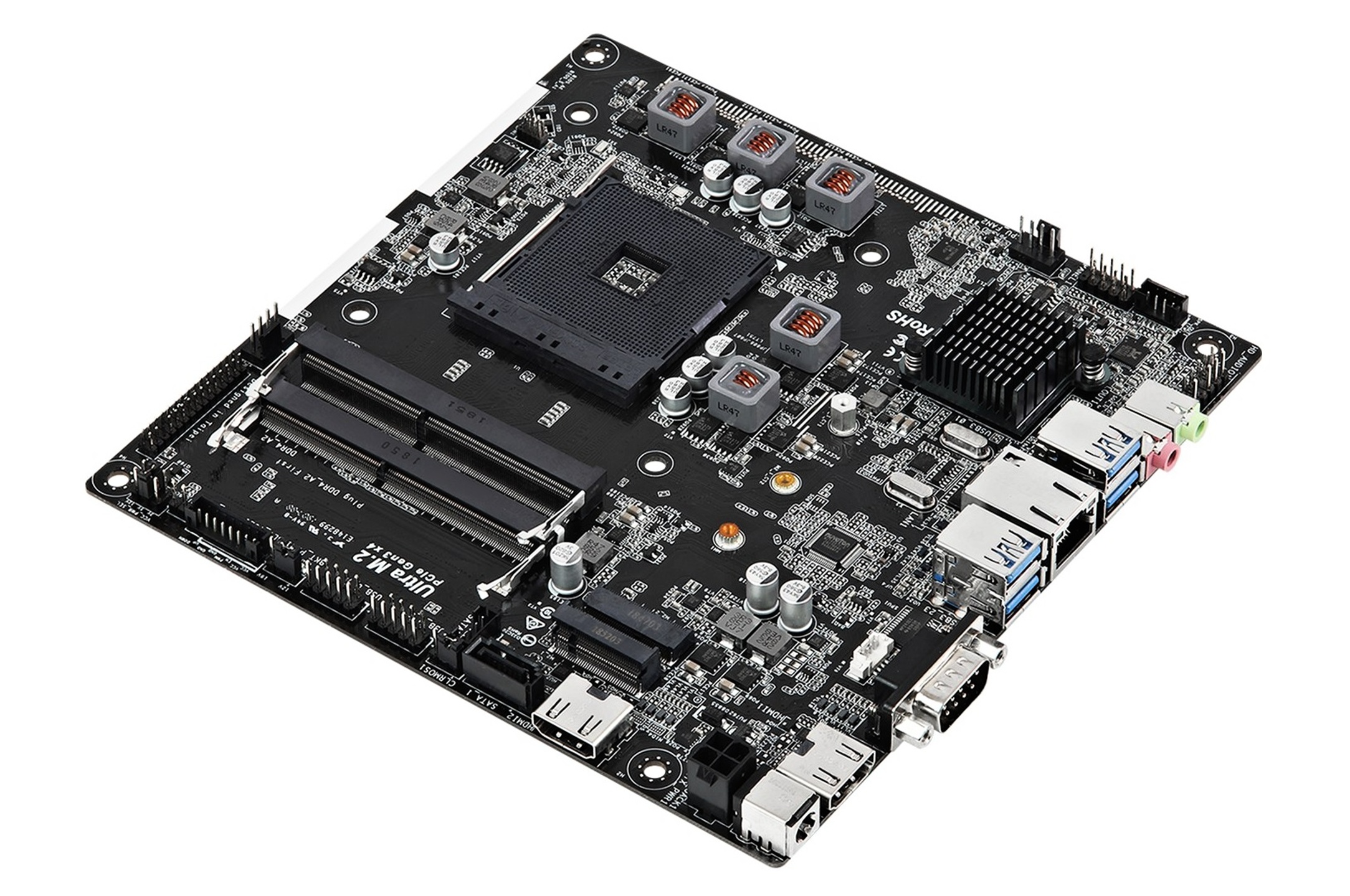 The «inlet» temperature during the measurements was maintained at 22 degrees Celsius.
The «inlet» temperature during the measurements was maintained at 22 degrees Celsius. 

 Physically, sound level (pressure) measurements were carried out in the near (and diffuse) field at a distance of 25 cm from the surface of the cooler fan (the values obtained in this case exceed the background level of the room with a margin and quite reasonable measurement error), and then the data were recalculated to an equivalent distance of 1 meter subtracting 12 dB from them. The scalability of the results for the sound level was further verified by measurements at distances of 25, 50 and 100 cm and confirmed the validity of this approach. (Of course, all other sources of PC noise, fans and hard drives, were excluded during such tests.) It is clear that this approach has a number of pitfalls, however, apparently, this is exactly what cooler manufacturers themselves do, measuring levels in the region of 16-20 dBA, because otherwise it would be very problematic to register them with guarantee ;).
Physically, sound level (pressure) measurements were carried out in the near (and diffuse) field at a distance of 25 cm from the surface of the cooler fan (the values obtained in this case exceed the background level of the room with a margin and quite reasonable measurement error), and then the data were recalculated to an equivalent distance of 1 meter subtracting 12 dB from them. The scalability of the results for the sound level was further verified by measurements at distances of 25, 50 and 100 cm and confirmed the validity of this approach. (Of course, all other sources of PC noise, fans and hard drives, were excluded during such tests.) It is clear that this approach has a number of pitfalls, however, apparently, this is exactly what cooler manufacturers themselves do, measuring levels in the region of 16-20 dBA, because otherwise it would be very problematic to register them with guarantee ;). 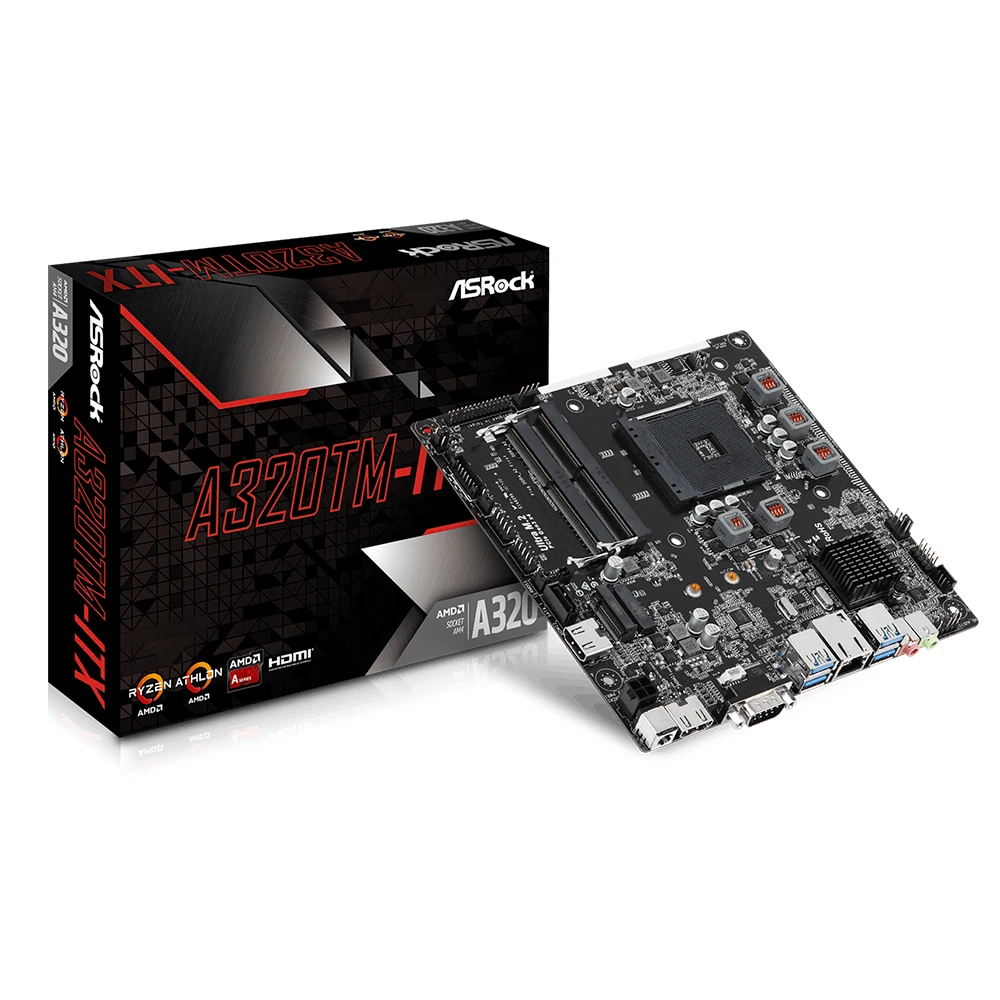 (By the way, in our measurements, switching the device to a free field, we got readings 1-1.5 dBA lower!) Nevertheless, the results we obtained at the lowest noise levels (the most critical for the error) differ from the specifications of coolers by 2 dBA (upward), which allows us to conclude that the concept of the approach we used in this case is correct and that we obtain quite realistic figures for the noise level of coolers. The results of our noise measurements are shown in the following diagram along with the fan tachometer readings.
(By the way, in our measurements, switching the device to a free field, we got readings 1-1.5 dBA lower!) Nevertheless, the results we obtained at the lowest noise levels (the most critical for the error) differ from the specifications of coolers by 2 dBA (upward), which allows us to conclude that the concept of the approach we used in this case is correct and that we obtain quite realistic figures for the noise level of coolers. The results of our noise measurements are shown in the following diagram along with the fan tachometer readings.  Whereas its competitors, even if they work at the minimum standard speed for themselves, are oh so far from it in terms of noiselessness.
Whereas its competitors, even if they work at the minimum standard speed for themselves, are oh so far from it in terms of noiselessness. 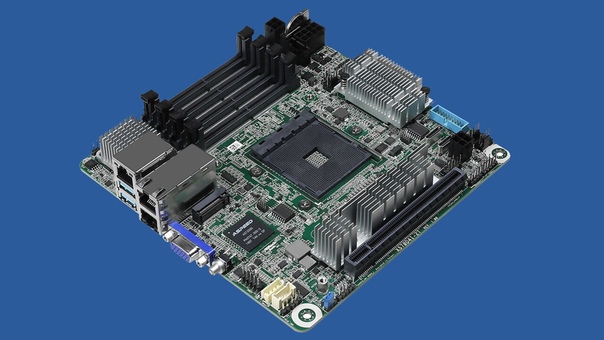 However, in order for this saving to be more tangible for us, we should use correct cooling systems — there is no need to lower the “processor degree” by any means (lowering the degree is not recommended at all;)). You can simply keep the processor temperature at an acceptable (permissible by specifications) level, but at the same time not shake the air with insanely rotating propellers, but limit yourself to the minimum sufficient rotation speed of the processor cooler fan, regulated from the “correctly taken” temperature. And it is precisely for this — that is, for the fact that it does not waste air and provides an unprecedentedly low level of noise in real user work with the right level of cooling — we with a clear conscience give our original design award to Cooler Master’s Susurro cooler. He deserved it!
However, in order for this saving to be more tangible for us, we should use correct cooling systems — there is no need to lower the “processor degree” by any means (lowering the degree is not recommended at all;)). You can simply keep the processor temperature at an acceptable (permissible by specifications) level, but at the same time not shake the air with insanely rotating propellers, but limit yourself to the minimum sufficient rotation speed of the processor cooler fan, regulated from the “correctly taken” temperature. And it is precisely for this — that is, for the fact that it does not waste air and provides an unprecedentedly low level of noise in real user work with the right level of cooling — we with a clear conscience give our original design award to Cooler Master’s Susurro cooler. He deserved it! 